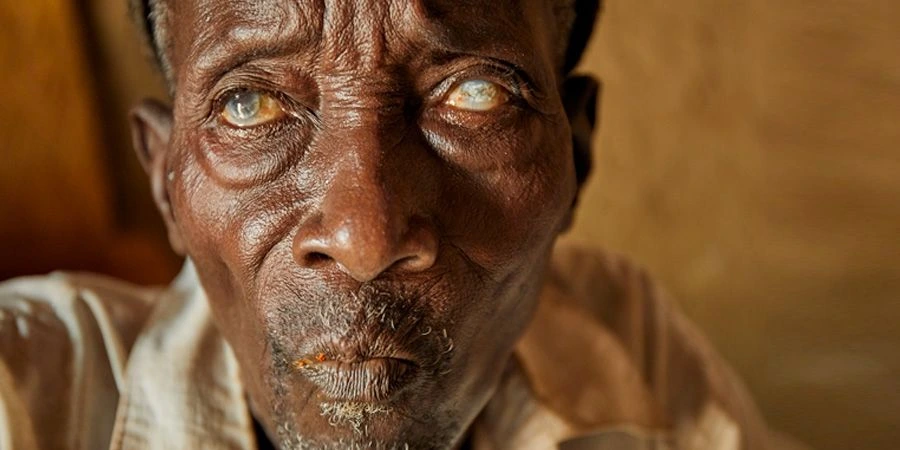Author's details
- Dr. Khashau Eleburuike
- MBBS (Ilorin) MSc. Global Health Karolinska Institute.
- Resident doctor in family medicine in Northern Sweden.
Reviewer's details
- Dr Odukanmi Oluronke
- B.SC, MBBS, MPH (Ilorin), Fellow West African College of Surgeon (Ophthalmology).
- Consultant Ophthalmologist, Kwara State Specialist Hospital; Alagbado.

- Date Published: 1741651200
- Date Updated: 1741651200
Cataracts For Patients in Sub-Saharan Africa
Introduction
What are Cataracts?
A cataract is a condition where the clear lens of the eye becomes cloudy, making it difficult to see. It is one of the leading causes of vision loss, especially in older adults, but can affect younger people too, particularly those with certain risk factors.
Discussion
Causes of Cataracts:
- Aging: Most common cause, especially in people over 50.
- Injury to the Eye: Trauma or injury to the eye can lead to cataracts.
- Poor Nutrition: Lack of essential vitamins and nutrients can increase the risk of cataracts.
- Exposure to Sunlight: Long-term exposure to sunlight without protection (like sunglasses or hats) can cause damage to the eye.
- Diabetes: People with uncontrolled diabetes are at a higher risk of developing cataracts.
- Use of Steroids: This is usually due other medical conditions can increase the risk of cataracts.
- Uveitis: This is a type of red eye that usually causes intense pain and poor sight.
Symptoms of Cataracts
- Blurred or cloudy vision.
- Difficulty seeing at night.
- Sensitivity to light or glare.
- Whitish speck in the house.
- Frequent changes in glasses or contact lens prescriptions due to reduction in vision.
- Faded colors or yellowing of vision.
Diagnosis and Treatment
A healthcare provider or eye specialist can examine your eyes to determine if you have cataracts. The only effective treatment is surgery, which involves removing the cloudy lens and replacing it with an artificial one. Cataract surgery is a common procedure and has a high success rate.
Prevention Tips
- Protect your eyes from excessive sunlight by wearing sunglasses and hats.
- Eat a healthy diet rich in fruits and vegetables to support eye health.
- Avoid smoking and limit alcohol consumption.
- Manage chronic conditions like diabetes through proper medication and diet.
- Regularly visit an eye clinic, especially if you are over 40.
Accessing Care in Sub-Saharan Africa
- Cataract surgeries are often available in eye clinics and mission hospitals. Some regions offer free or low-cost surgery through community programs.
- Seek early care when you notice changes in your vision, as treatment is most effective before the cataract severely affects your sight.
- Traditional remedies for cataracts are not effective and may worsen the condition. It is important to see a trained healthcare professional for proper diagnosis and treatment.
Conclusion
Cataracts can lead to blindness if not treated, but surgery can restore vision in most cases. Early detection and treatment can help you maintain good eyesight and a better quality of life.
References
- Lam D, Rao SK, Ratra V, Liu Y, Mitchell P, King J, Tassignon MJ, Jonas J, Pang CP, Chang DF. Cataract. Nature reviews Disease primers. 2015 Jun 11;1(1):1-5.
- Robman L, Taylor H. External factors in the development of cataract. Eye. 2005 Oct;19(10):1074-82.
- Asbell PA, Dualan I, Mindel J, Brocks D, Ahmad M, Epstein S. Age-related cataract. The Lancet. 2005 Feb 12;365(9459):599-609.
- Liu YC, Wilkins M, Kim T, Malyugin B, Mehta JS. Cataracts. The Lancet. 2017 Aug 5;390(10094):600-12.
